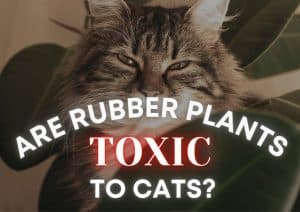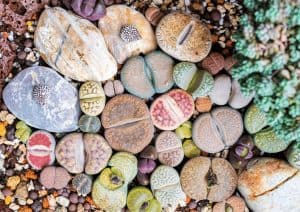7 Houseplants That Are Not Poisonous To Cats (With Images)
-
Chris Dosser
- March 2, 2022
If you buy something using the retail links in our articles, sometimes we earn a small affiliate commission. This does not impact the products we recommend.
Houseplants, by their very nature, are extremely difficult to keep away from your pets (and children). So, it’s up to you to make sure the ones you choose to adorn your home are safe for all family members, no matter how small and furry they may be.
This can be tricky if you don’t know where to start. There are so many options out there — especially since working from home has become increasingly popular this year. You need to know the houseplants that are not poisonous to cats and steer away from the toxic ones. Yup, this is easier said than done.
But don’t worry, we’re here to take the pressure off. Even though we can’t talk about every single safe plant today, we’re going to give you a bunch of options to choose from – you’re bound to find some idea that appeals to your interior design aesthetic.
If you’re more of a visual learner, don’t worry we have you covered. Check out the infographic by Lemonade at the foot of this post to pick up some useful tips on how plants and animals can co-exist indoors.
But first, let’s discover why some plants are toxic in the first place.
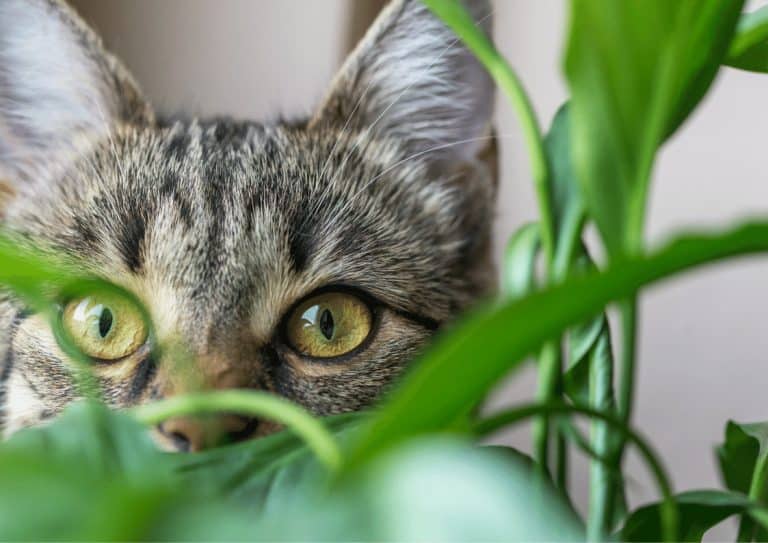
What makes a plant toxic to cats?
There is a (rather alarming) number of substances found in plants that are toxic to cats. Some of them are present in all areas of the flower, while others are only in the stems or roots. We’ll talk about the main ones here before we get to your burning, “what houseplants are not poisonous to cats” question. Deal? Great, let’s jump into the details.
Alkaloid Colchicine
Alkaloid colchicine can be found in many plants but it’s highly concentrated in those in the Colchicum family, including:
- C. autumnale (autumn crocus)
- C. byzantinum (meadow saffron)
- C. soboliferum
- C. turicum
- and many more.
Cats that ingest a lot of alkaloid colchicine are likely to exhibit gastrointestinal symptoms like vomiting, diarrhea, drooling. This could progress to seizures, breathing problems, liver damage, and eventually death. Unfortunately, the symptoms can take a few days to manifest and show in your feline friend.
Grayanotoxins
Grayanotoxins have a somewhat funny common name — mad honey — however, the effects on your kitty can be far from a laughing matter. The natural compound is found in many rhododendron species, as well as azaleas, including:
- Rhododendron luteum (yellow azalea, sometimes called the honeysuckle azalea)
- Rhododendron ponticum (common rhododendron, sometimes called the pontic rhododendron)
- Rhododendron simsii (Indian azalea)
- and over 1000 more.
Even though grayanotoxins are found in honey, they have been neutralized via voltage-dependent sodium channels. If your feline friend comes into contact with a plant containing the concentrated substance, they could endure symptoms — vomiting, loss of appetite, heart arrhythmias, tremors, seizures, coma — that lead to death.
We recommend removing these plants out of reach, if you can, to help keep your little one safe. They only need to ingest a minuscule amount to be affected!
Saponins
Saponins are a diverse compound class that is found in a lot of plants. Although, Cyclamen spp. or Persian violet has an unusually high concentration. While all parts of this plant are toxic to your cat, the roots and tubers are the most deadly.
You should not bring these plants into your home as your little furry friend will have to deal with the following symptoms:
- Drooling
- Vomiting
- Diarrhea
- Abnormal heart rate
- Abnormal cardiac rhythms
- Seizures
- And, finally, death.
Lycorine
The majority of plants in the genus, Narcissus, and species, Amaryllidaceae, have a high concentrate of the poisonous agent, lycorine. This includes flowers such as:
- Clivia miniata (cultivated bush lily)
- Narcissus (daffodils)
- Lycoris (surprise lily)
- Galanthus (snowdrop)
- Hymenocallis (spider lilies)
- Crinum powellii (swamp lily)
- and many, many more.
Usually, cats who ingest these flowers will experience drooling, vomiting, abdominal pain, and diarrhea. Depending on the amount they’ve eaten, however, they might suffer from cardiac arrhythmias, low blood pressure, convulsions, and breathing issues.
Bufadienolides
Surprisingly, toad venom has the highest concentrate of bufadienolides. But, they have been found in plants of the Kalanchoe genus like the devil’s backbone (sometimes called the chandelier plant).
Whichever part of the plant your cat ingests is poisonous since it all contains these harmful bufadienolides. We should mention that they typically only cause vomiting, diarrhea, and drooling (which your cat should recover from). But, these toxins have been known to cause severe symptoms like collapse and seizure. To be on the safe side, avoid these!
Calcium Oxalate Crystals
If you’ve ever had a Dieffenbachia (giant dumb cane, charming dieffenbachia, dumb cane, exotic perfection) in your house, we hope you didn’t have cats! They are incredibly popular among houseplant lovers (like you and I!) but they contain a lot of calcium oxalate crystals that may harm your little furball.
Technically, they aren’t deadly. However, this substance can cause a burning sensation in the mouth, vomiting, difficulty swallowing, and more. In short, your kitty will be highly uncomfortable.
Okay, as we said there are so many substances found in different plants that are toxic to cats. We simply can’t list them all as we’d be here for years! So, let’s move on to the houseplants that are not toxic to your little feline friend, shall we?
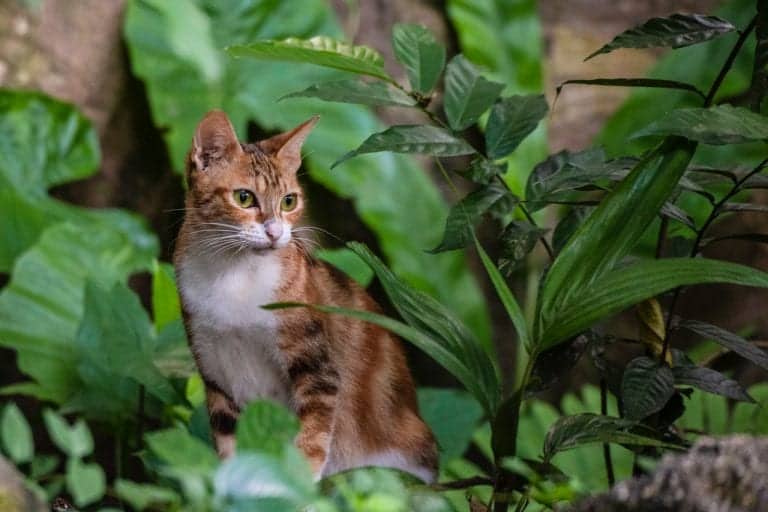
Houseplants that are not toxic to cats
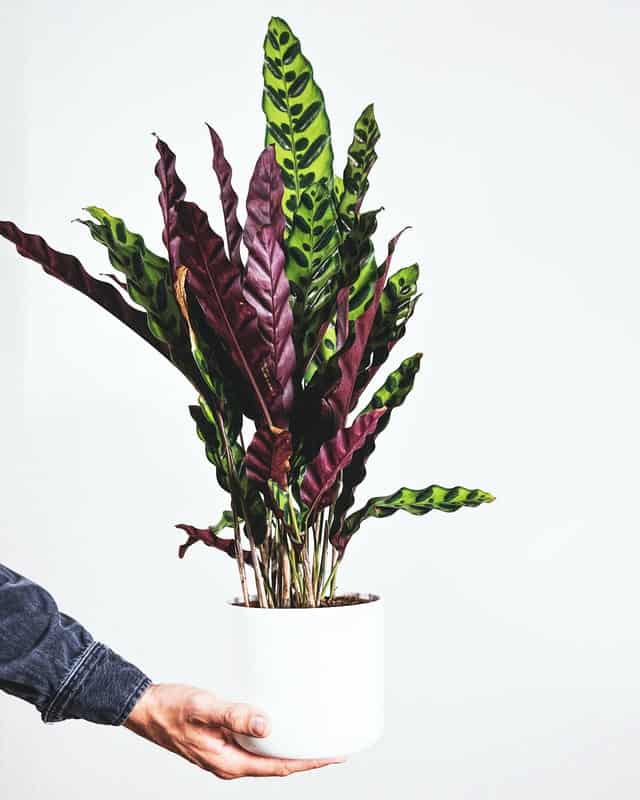
Rattlesnake Plant (Calathea lancifola)
These plants are fantastic for creating a tropical-themed home. They bloom in the late spring but achieve their full beauty in the early summer. The leaves display all shades of green — even their undersides contribute to the glorious spectacle thanks to their rich purple tone.
We should warn you though, it can grow quite tall so make sure you’ve got enough room! But it’s relatively easy to care for and definitely makes a statement.
Growing Conditions
Light: You should try to find a spot in your home that gets direct sunlight. Even though too much will cause problems for your rattlesnake plant, it usually prefers direct sunshine.
Temperature: As long as the temperature doesn’t go below 60 degrees Fahrenheit or above 75 degrees Fahrenheit, it should thrive.
Water: Water frequently while it’s growing. Once dormant (i.e. in the winter) don’t water until the topsoil is dry.
Soil: Use a potting mix that is 1 part perlite to 2 parts peat. It needs to be able to drain but also retain enough moisture.
Fertilizer: This is optional! If you feel like it, use a balanced liquid fertilizer once per month while it’s actively growing.
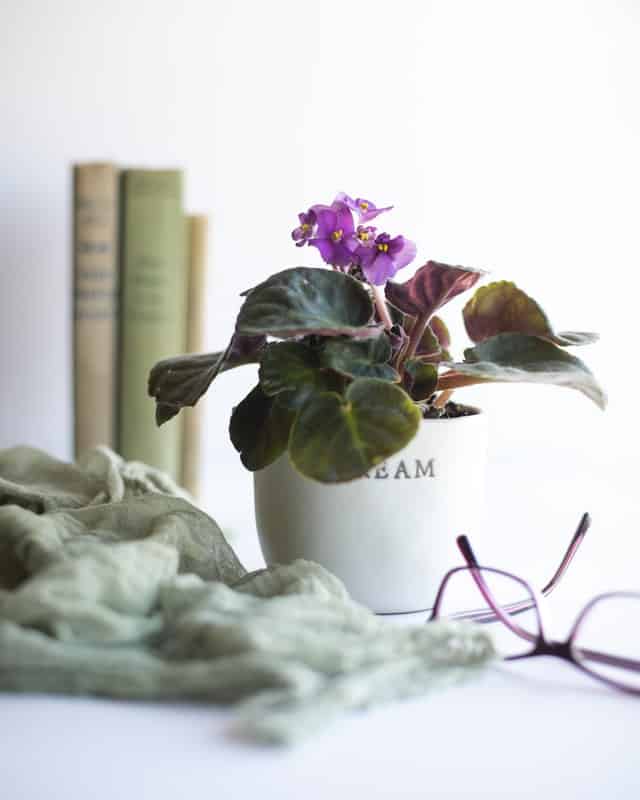
African Violet (Saintpaulia)
As you can probably tell by the name, African violet plants display an elegant purple color. Their flowers are gorgeously frilly and their leaves are beautifully soft. The dark green tone just adds to the vibrancy of their blooms.
Unfortunately, they are not as easy to take care of like the aforementioned Gloxinia. But, if you learn their little excentricities you will be highly rewarded for your efforts.
Growing Conditions
Light: They like to be showered with bright to medium filtered light. Placing them in the wrong conditions will affect the flowers and the green tone on the leaves. If yours has darker leaves, it will need more light than others.
Temperature: While they thrive at a nice 70 degrees Fahrenheit, you can place them in colder rooms. Just don’t let them sit in temperatures below 60 degrees Fahrenheit.
Water: Okay, here’s where they get picky. Yep, it’s why many people pass on having these in their house. But we love them, so we just had to include these beauties.
Use tepid water that has been stagnant for at least 48 hours to water African violets. Don’t splash the leaves with the droplets, aim solely for the base (even one little drop can damage their foliage).
Soil: You can make your African violet mix using perlite, peat moss, and vermiculite. To be on the safe side though, we suggest you use a ready-made African violet potting soil.
Fertilizer: You’ll need to use special food made for these specific houseplants. Anything else is sure to damage them.
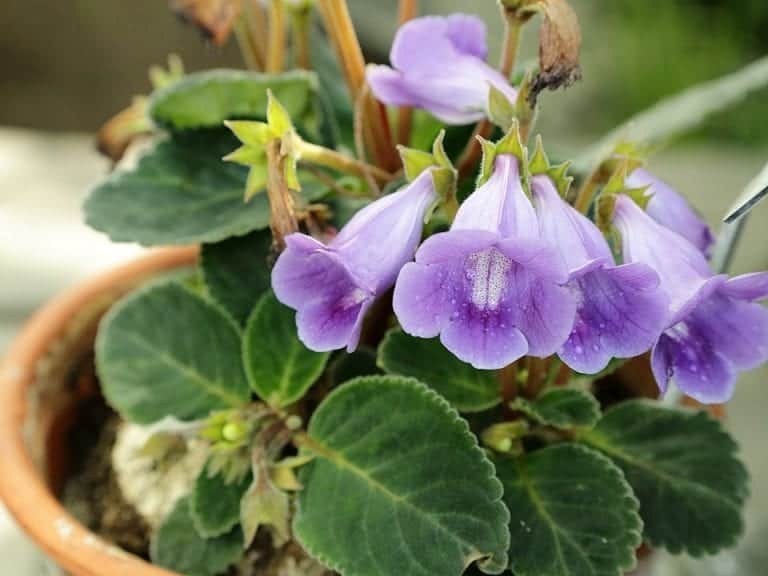
Gloxinia (Sinningia speciosa)
Gloxinia is a seriously impressive looking plant (we wanted to start strong, after all). They have huge velvety leaves and large bell flowers that you can’t help but stare at! We prefer single flowers but you can buy the double flower version for a fuller effect if you want to make more of a statement.
Thankfully, they’re not hard to grow and take care of (you might think otherwise when you see them in full swing, but trust us). The only extra bit of upkeep with these is removing the regrowth when you see fit. Other than that, they’re an absolute dream to have in your home.
Growing Conditions
For those of you who want to know a little bit more about the actual care needed for each of these houseplants that are not poisonous to cats, this section is for you!
Light: These babies don’t like direct sunlight. You should try and pop it in a place that has great exposure to indirect light.
Temperature: Gloxinia needs an average temperature with a decent humidity level. Between 70 to 78 degrees Fahrenheit is best.
Water: Try to mist once a day but make sure none of the droplets fall onto the leaves. Water the soil throughout the growing and blooming season so you can get the full gloxinia experience.
Soil: Gardenia or African Violet mix is the best bet here. It should have fantastic draining properties with a slightly acidic touch.
Fertilizer: It isn’t always necessary to fertilize this type of plant. But if you want to, only use a liquid fertilizer when it’s growing. Of course, you should follow the instructions on the packaging for the proper dosage amount.
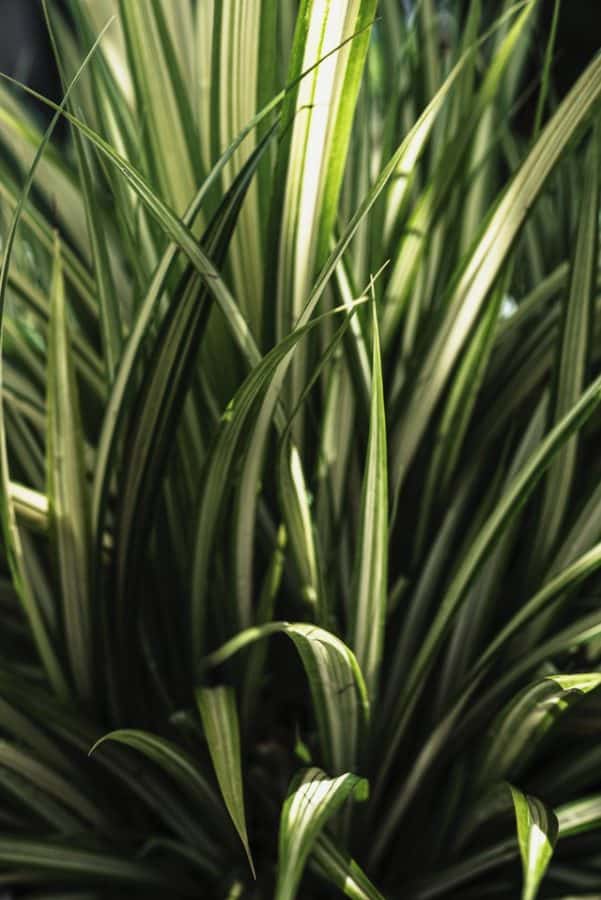
Spider Plant (Chlorophytum comosum)
Spider plants are, by far, the easiest and most adaptable of all houseplants. They don’t tend to suffer from any issues (apart from brown tips, which can be rectified), and they can thrive in various conditions.
Depending on your style, you can buy a green one or a variegated version. We love the variegated variety, as it gives our home a different edge but the choice is yours. Regardless, we know you’ll love the simplicity of these beautiful plants.
Growing Conditions
Light: They flourish in bright but indirect light. Their tips turn brown relatively quickly if you place them in full sunshine.
Temperature: Spider plants prefer cooler temperatures. Think 55 degrees Fahrenheit to 65 degrees Fahrenheit. This should suit your home rather well.
Water: Don’t let the soil become soggy because root rot will take over. Just water them when their soil is dry and let them turn arid between each watering session.
Soil: All you have to remember here is that spider plants benefit from good drainage.
Fertilizer: To be honest, we don’t fertilize our spider plants. We’ve found that they don’t really need it. If you choose to fertilize them though, apply it sparingly. You’ll get a lot of brown-tipped leaves otherwise.
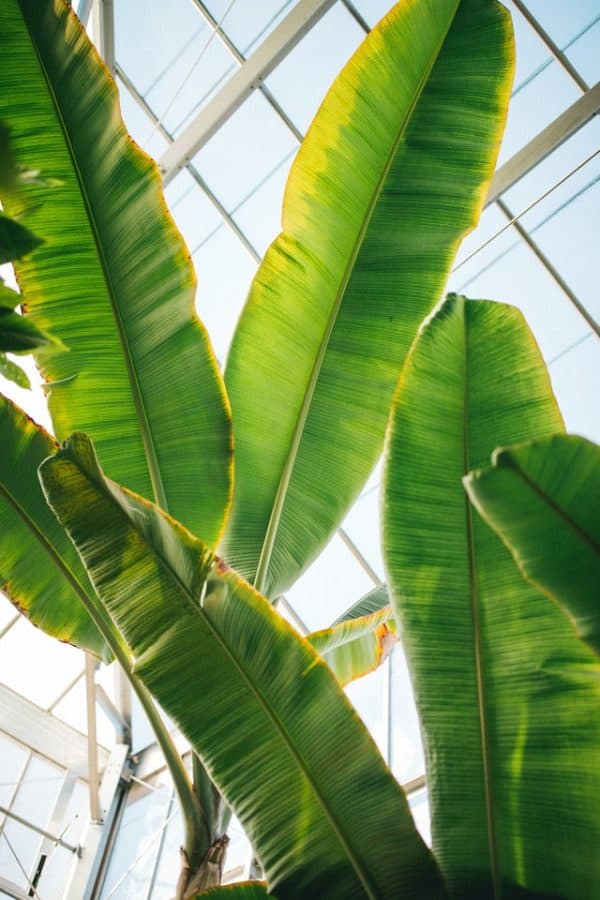
Banana Tree (Musa)
FYI, it’s not a tree. It’s the biggest herb on earth! Not only that, but banana trees are one of the most popular houseplants. Yep, some people call them a cliche but more fool them; they’re fun to look after and make a fab addition to any interior design theme. Plus, they’re relatively easier to care for. What more could you want?
Growing Conditions
Light: They love full sun. Although, if you have a variegated version, you want to place them in partial shade as they’re easily burnt.
Temperature: Banana trees grow naturally in tropical climates, so they need a warm, humid environment. Aim to keep the temperature between 75 and 95 degrees Fahrenheit.
Water: You will have to water them quite a lot (1 to 2 inches weekly, ensuring the soil remains evenly moisturized)! If you have more than one banana tree, sit them close together. Why? This helps them keep the water inside their leaves.
Soil: Make sure the mix is slightly acidic, has good drainage properties, and deep.
Fertilizer: Fertilize them once per month with a balanced, off-the-shelf fertilizer. You should follow the instructions on the packet. We know some plant lovers don’t agree with fertilizer, but banana trees need to be fed.
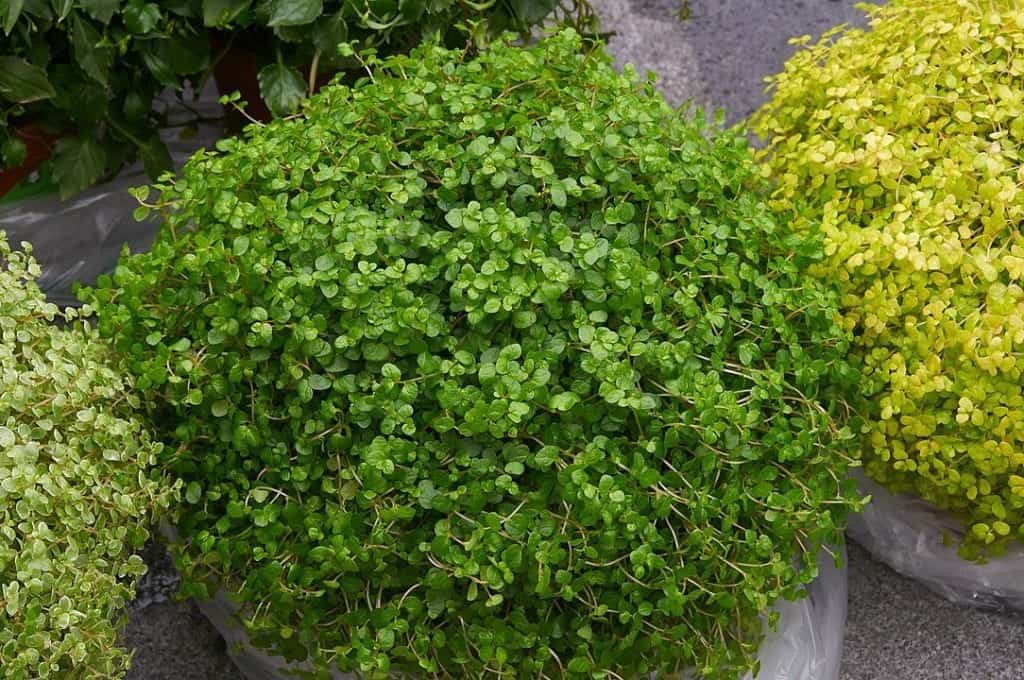
Baby Tears (Soleirolia soleirolii)
The word we’d use to describe Soleirolia soleirolii is cute. They look like a little carpet for fairies. Their tiny leaves spread over the side of the pot bringing a sense of flowing feng shui into your home office.
Baby tears are fragile and small but they need a boatload of attention. They are, quite literally, like a crying baby. However, their beauty might be worth it for some of you to enjoy their needy attitude.
Growing Conditions
Light: You shouldn’t put these on your window sill. Why? Because they thrive in indirect light. They’ll wilt pretty quickly if you place them in direct sunlight.
Temperature: Your home’s temperature should be perfect. Around 60 degrees Fahrenheit to 75 degrees Fahrenheit is the best.
Water: Try not to let the soil get soggy as root rot will quickly settle down and eventually kill your plant. However, it does need to be moist at all times.
Soil: Make sure your potting mix has good drainage, is well-aerated, and has a lot of peat moss.
Fertilizer: You should fertilize baby tears every other week when they are growing. Don’t use a fully concentrated food though, dilute it beforehand.
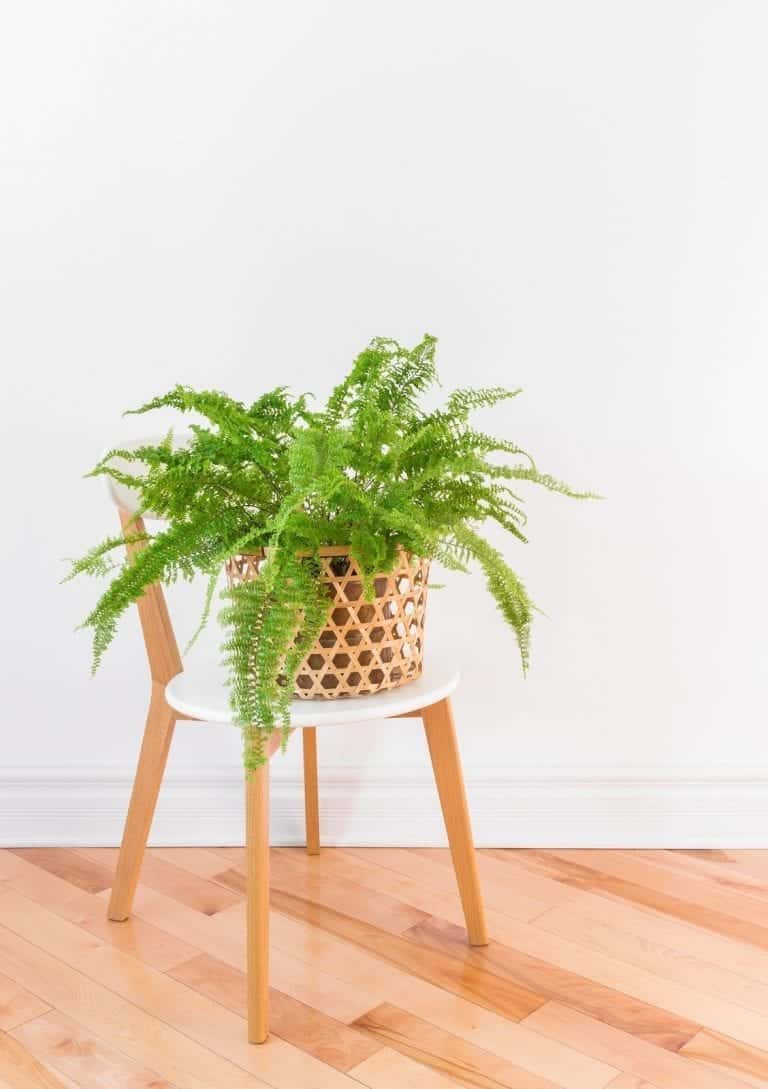
Boston Ferns (Nephrolepis)
Another super-popular houseplant that is not poisonous to cats is the wonderful Boston fern. Their tiny green leaves and bushy appeal truly make a statement in your home office, living room, or kitchen. However, it should be noted that their care plan is specific. Don’t stress, it isn’t necessarily difficult, it just requires some prior knowledge to look after them well (which we’re about to give you).
Growing Conditions
Light: Just like other houseplants, Boston ferns require indirect light. It won’t do them any good if you put them in full-on sunshine.
Temperature: They thrive in cooler indoor temperatures. But, they still require a high level of humidity. We’ve found that the best way to do this is to invest in a humidifier — especially if you live in drier climates or experience bad winters.
Water: Boston ferns need constantly damp soil. If you let it dry out, they die pretty quickly (sadly). Make sure you check the moisture level every day by pushing your finger into the soil. If it’s dry, add more water right away.
Soil: They benefit greatly from potting mixes that contain a lot of peat moss. You should ensure you douse it in water once a month to keep the moss nice and healthy.
Fertilizer: You should only fertilize your Boston fern a few times a year. Any more than that will damage your gorgeous leafy friend.
Final thoughts
There are lots of houseplants that are not poisonous to cats however these are our personal favourites. Each provides a stunning, productivity-inspiring splash of nature into your home or office without hurting your feline friends.

Chris Dosser
Co-Founder of Eden Indoors
Chris is a self-taught horticulturist with over a decade of experience caring for houseplants and creating lush, thriving indoor oases. He specializes in Monstera, and by self admission has a serious problem with buying and propagating rare indoor plants!
Similar Posts
Are Rubber Plants Toxic To Cats? [Latex Alert!]
Rubber plants are extremely popular houseplants, but do they have the potential to be harmful to our pet felines?
Patience Is A Virtue: How Long Do Lithops Take To Grow?
Lithops plants can live for a very long time, but how long do they take to grow? How long can you expect to wait before your Lithops is mature?


